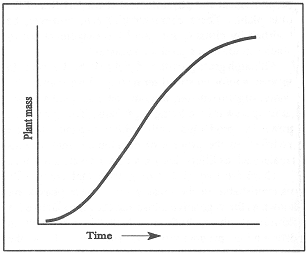At times I have often wondered, “How far am I in the process of learning tprs?” and “How much further do I have to go?” Well, after asking several teachers I have come to find that there are no real concrete answers to these questions and everyone has their own take on it. One teacher states:
The learning process for TPRS is similar to that for other skills: a sigmoid curve. That is, you start off learning slowly and deliberately and keep practicing, then your skills take off after a short period of time, eventually you level off and slowly improve over time. To get good, some teachers take 5 years, but I think you can do it faster if you are fluent and if you observe others and mimic their technique.
The first thing I wondered was, “What is a sigmoid curve?” and then “Should I feel guilty for not knowing that?” Well, either way I did what any other other self respecting American would do and looked it up on wikipedia.
 This is a picture of a sigmoid curve. It basically looks like an S. It fits exactly the explanation that the teacher gave on tprs development. I don’t know where I am in the curve and it really is not something I should worry about. I will know when I level out. What I do know is that I am in the growth period because I feel like I am changing so much and I am continually finding new ways to improve how I reach kids. Maybe it will always be this way, but for now it feels like a roller coaster and it can get pretty exciting. I am glad that I have chosen this for my career because every day has something new for me.
This is a picture of a sigmoid curve. It basically looks like an S. It fits exactly the explanation that the teacher gave on tprs development. I don’t know where I am in the curve and it really is not something I should worry about. I will know when I level out. What I do know is that I am in the growth period because I feel like I am changing so much and I am continually finding new ways to improve how I reach kids. Maybe it will always be this way, but for now it feels like a roller coaster and it can get pretty exciting. I am glad that I have chosen this for my career because every day has something new for me.
Another teacher also commented on tprs development and he said:
Don’t worry about where you are in tprs. Remeber that it is a process that you refine as go along. It is something that you learn to do by doing, practicing, being coached, and experiencing as a student. Basically, don’t worry about where you are. You are where you are and as long as you continue to refine you will be just fine.
I found these words to be very encouraging, too. I come from a musical background and constantly expect perfection of myself. I just need to take it one step at a time. It is just like taking a walk through a garden and removing the pedals from a rose. If you try to remove a pedal from a rose before it is ready, the pedal will tear. You cannot speed up the process, you just have to let the weather elements allow it bloom. So it is with tprs. We can subject ourselves to elements of experiences, but ultimately it is something that happens over time. I am excited to see what happens and to experience the blooming process.

 This is a picture of a sigmoid curve. It basically looks like an S. It fits exactly the explanation that the teacher gave on tprs development. I don’t know where I am in the curve and it really is not something I should worry about. I will know when I level out. What I do know is that I am in the growth period because I feel like I am changing so much and I am continually finding new ways to improve how I reach kids. Maybe it will always be this way, but for now it feels like a roller coaster and it can get pretty exciting. I am glad that I have chosen this for my career because every day has something new for me.
This is a picture of a sigmoid curve. It basically looks like an S. It fits exactly the explanation that the teacher gave on tprs development. I don’t know where I am in the curve and it really is not something I should worry about. I will know when I level out. What I do know is that I am in the growth period because I feel like I am changing so much and I am continually finding new ways to improve how I reach kids. Maybe it will always be this way, but for now it feels like a roller coaster and it can get pretty exciting. I am glad that I have chosen this for my career because every day has something new for me.